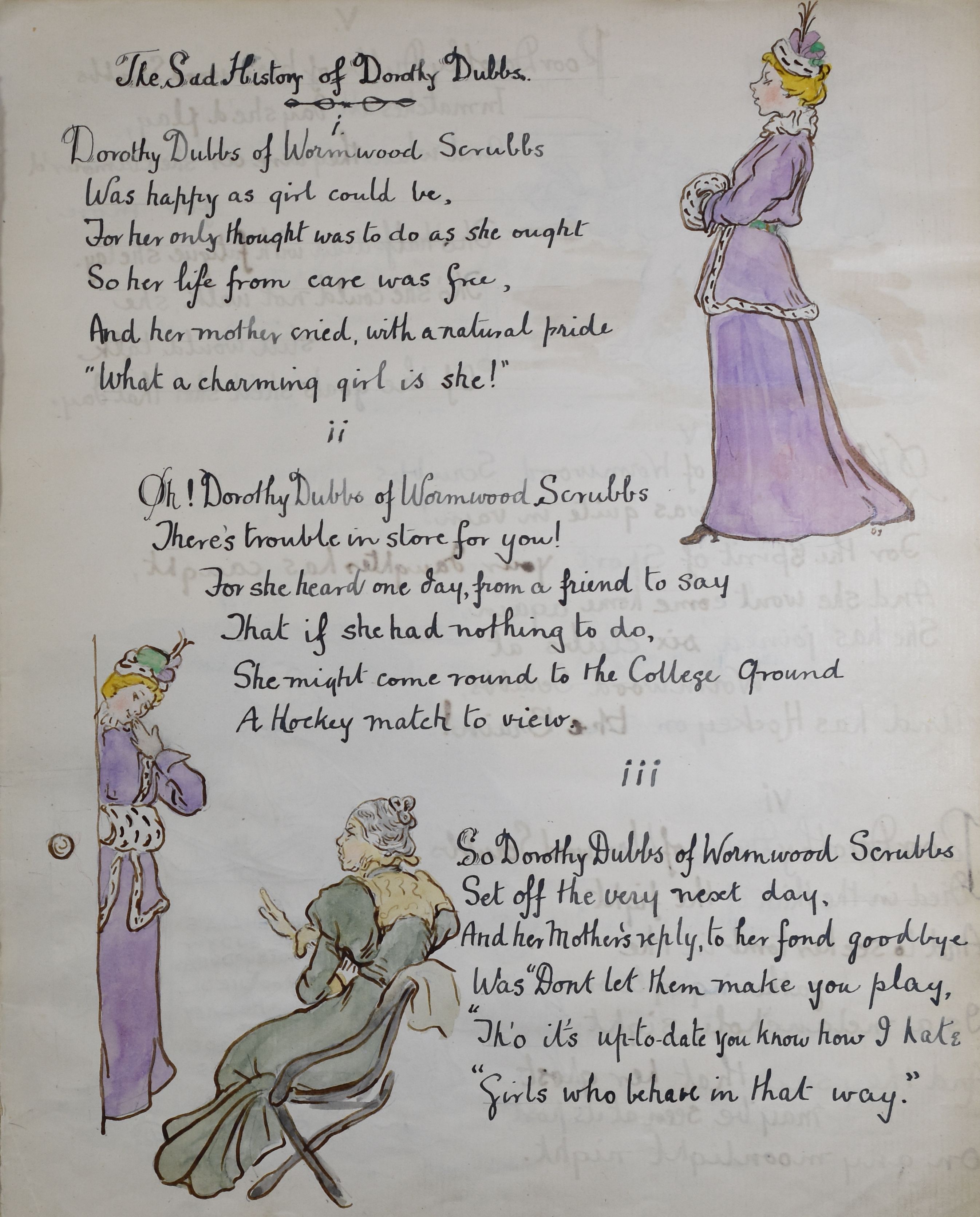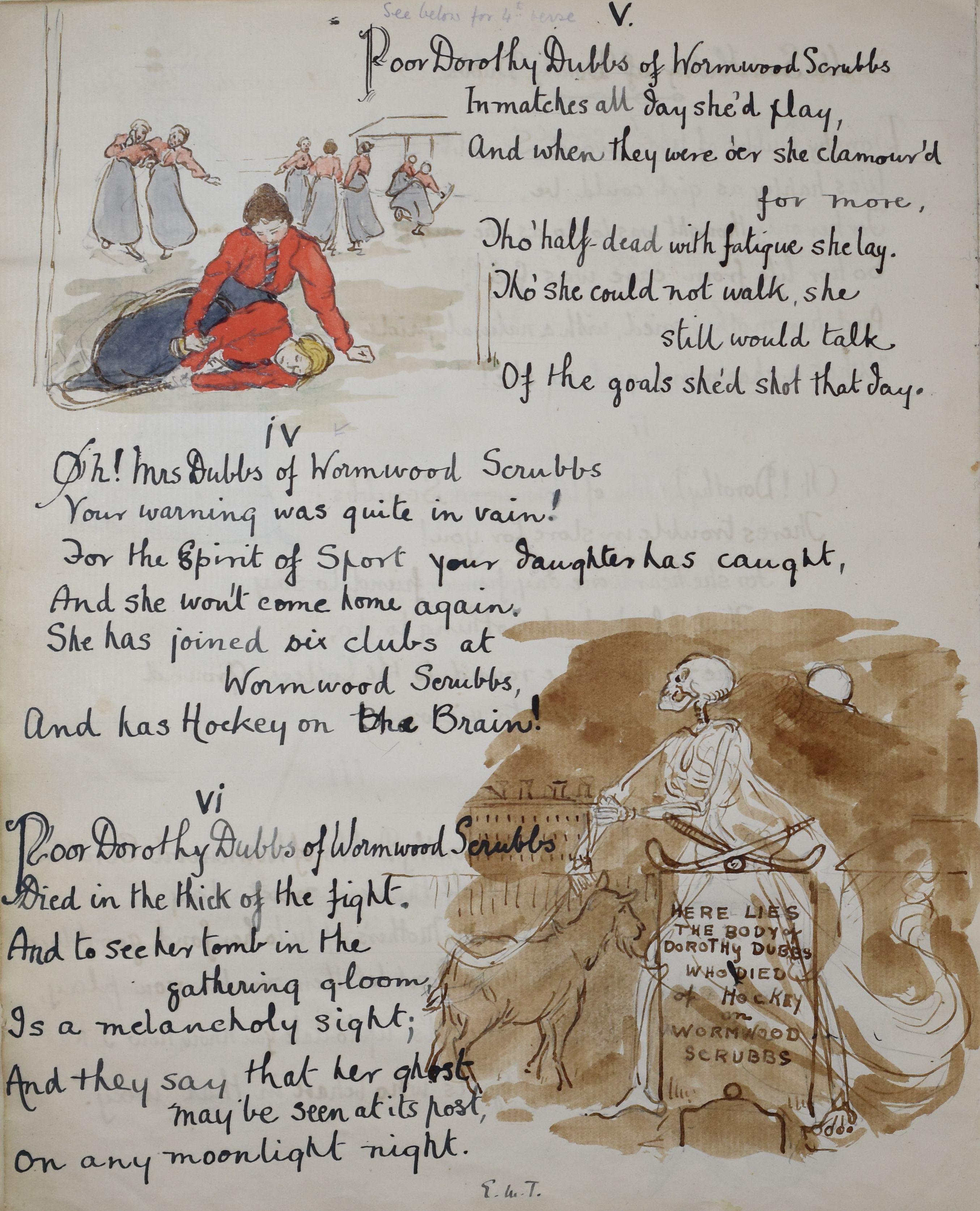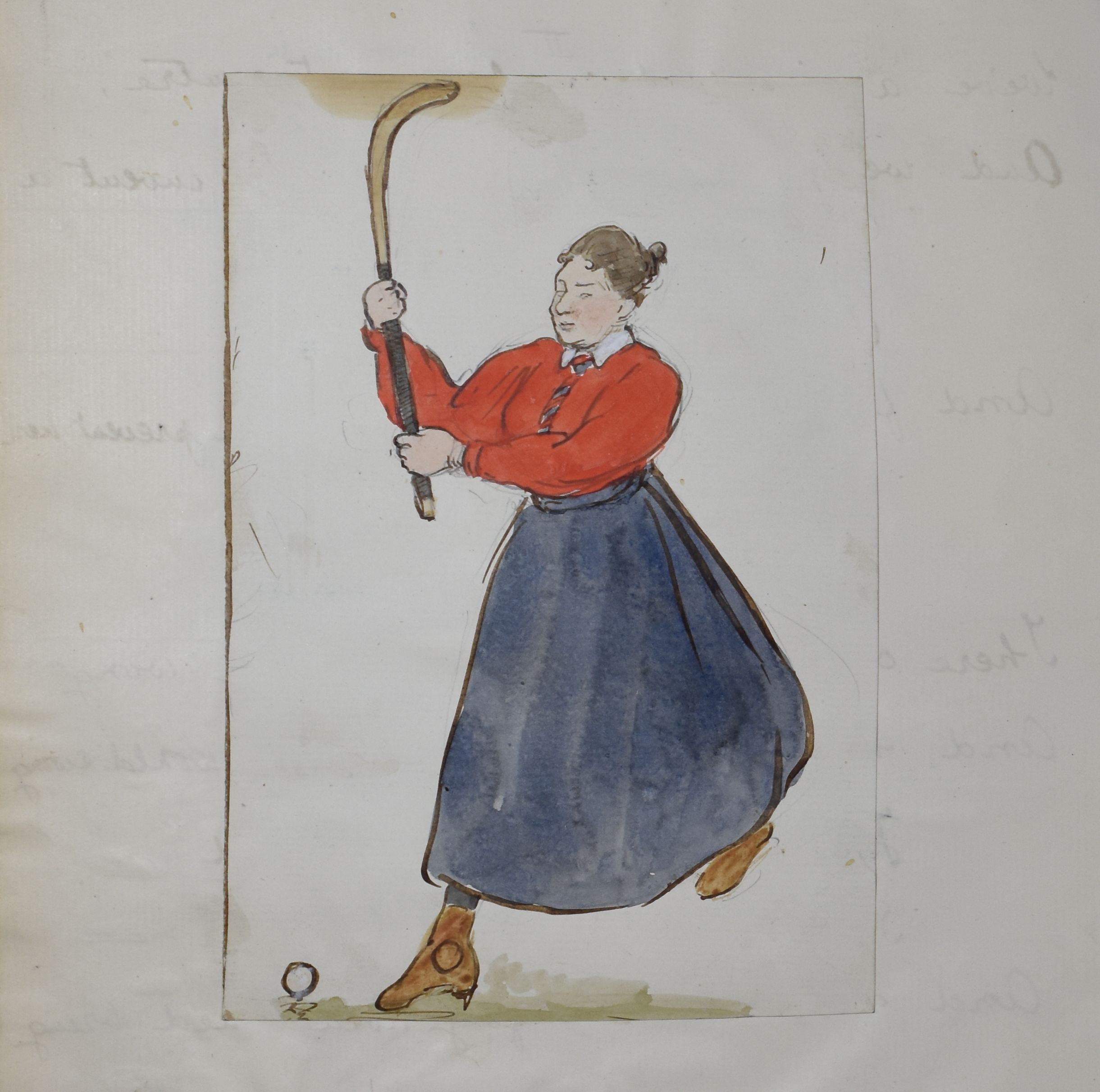Emma Thorne uses records relating to the early development of organised hockey played by women in the UK to explore the contribution made by sport to female emancipation.

For one of our Year 2 assignments we were asked to undertake a small-scale research project for which I decided to expand my skills and attempt some archival research. I used the AEWHA (Hockey) Collection, looking mainly at scrapbooks, minutes of meetings and publications dating from between 1895 and 1920, in order to explore the effect that participation in hockey had on the Victorian and Edwardian woman. The collection allowed me to get a first-hand insight into the way hockey itself as a game was played and organised, view how dress code and reform at the time evolved, and explore certain women who helped rationalise and organise the game through setting up the All England Women’s Hockey Association (AEWHA). The beginning of the collection coincides with the height of women’s suffrage activism and therefore allows us to see how strict Victorian social structures were beginning to be questioned by these sporting women.

I began with exploring the general context of sport as a whole in society and how it was heavily developed within the field of education in public boys’ schools. This is a time when education for girls was completely separate and different to boys’ education, focusing on developing skills that would make them more attractive as a wife rather than giving them the skills that we would consider basic education in our contemporary society, such as maths or science. However, the demand for women’s education began increasing despite the fears that organised education would be damaging for young girls. It is at this time that many girls’ schools were set up and university colleges were also opened and these institutions formed a foundation for the development of women’s sport and physical exercise.
Through researching the AEHWA (Hockey) Collection it is clear that women’s hockey was distinct from other female sports. The rules of the men’s game were retained and not adapted in order to make it more ‘female-appropriate’. The AEWHA promoted the purchase of the same equipment as used by male hockey players despite attempts by stick sellers to label cheaper, lower quality equipment as women’s equipment. Many women hockey players rejected traditional and conventional social norms such as choosing their careers in education over marriage.
Women’s sport and its development helped lay a foundation on which women’s rights were fought for and emancipation would continue, and is still being continued today. Women’s hockey helped to change the image, status and physical shape of women, giving players certain opportunities that their predecessors did not have and initiating the balancing of gender roles. Viewed in the context of the gradual and ongoing process of female emancipation, women’s participation in hockey in the late 19th and early 20th centuries was a useful tool in increasing women’s social independence and freedom.
